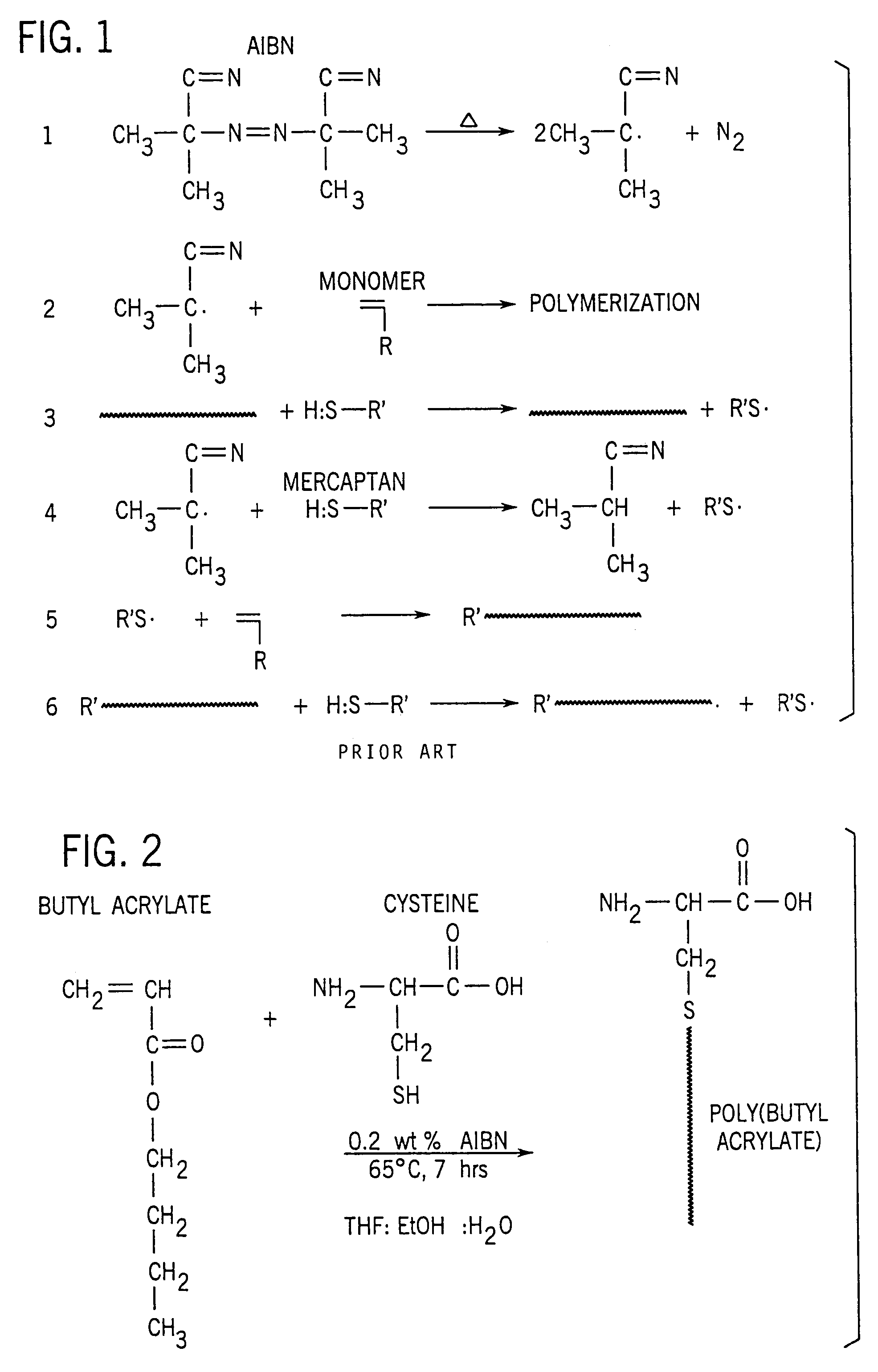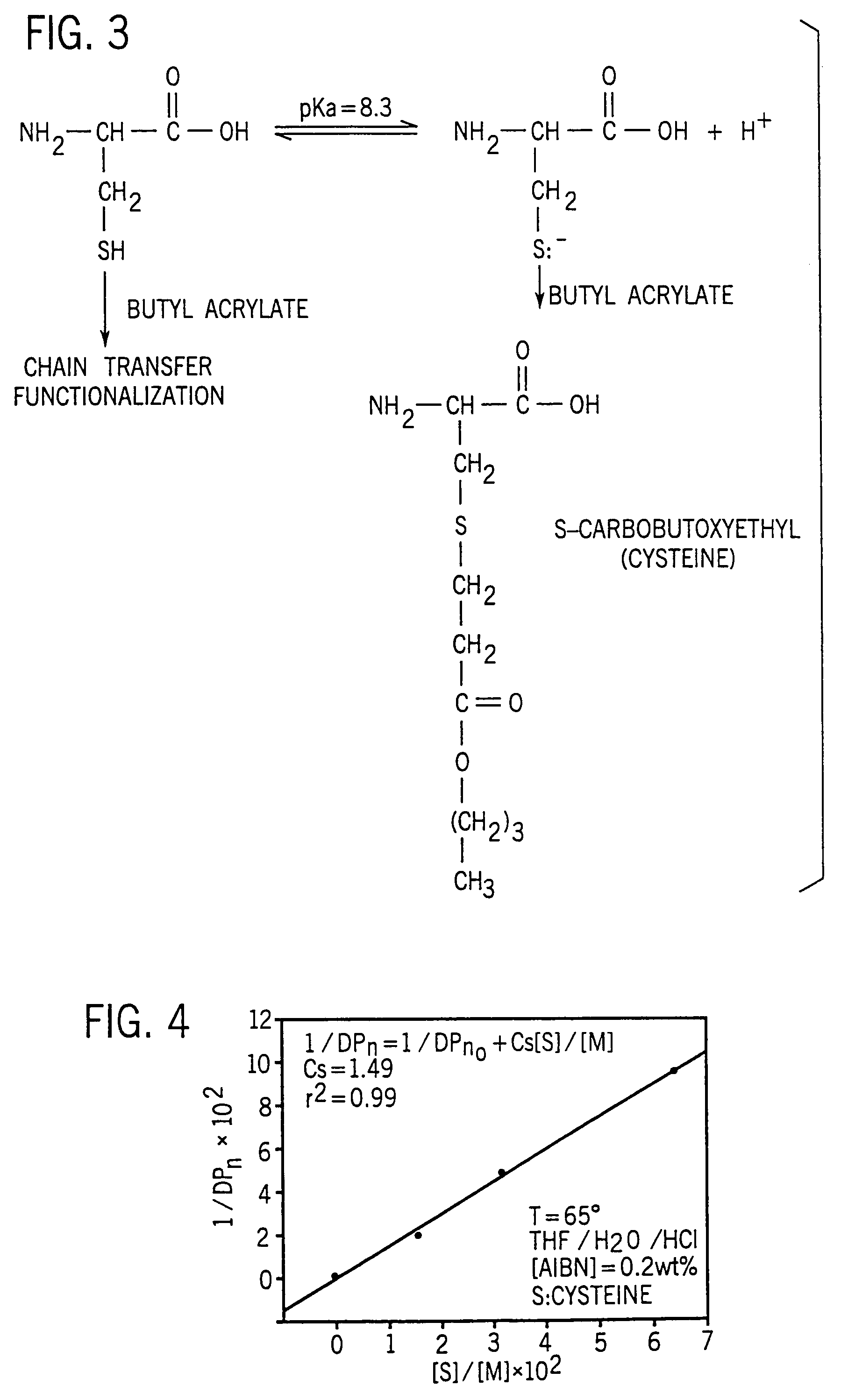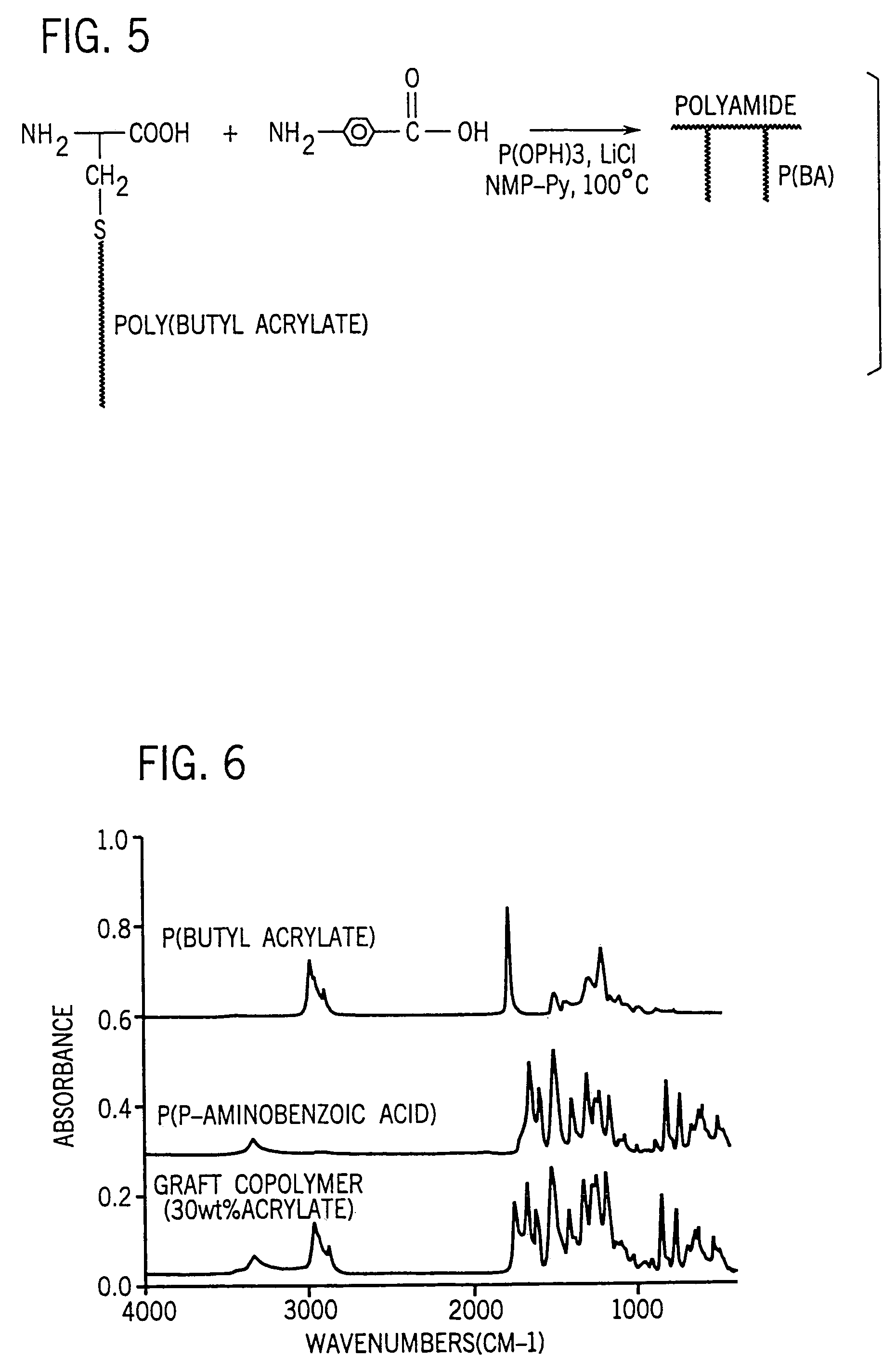Polyamide graft copolymers
a polyamide graft and copolymer technology, applied in the field of new amino acid functionalized macromonomers or polymer precursors, can solve the problems of inability to intimately admix or blend, incompatible mutually, and typically “messy” procedures
- Summary
- Abstract
- Description
- Claims
- Application Information
AI Technical Summary
Benefits of technology
Problems solved by technology
Method used
Image
Examples
example 1
[0086]This example depicts the preparation of specific macromonomers utilizing cysteine as the chain transfer agent and butyl acrylate, methyl methacrylate and octafluoropentyl methacrylate as monomers. Azobisisobutyronitrile (AIBN) was used as the initiator.
[0087]Poly(butyl acrylate) was chosen because it has a very low glass transition temperature (−54° C.) and, therefore, any graft copolymers containing it may be used as rubber modifiers. The fluoroacrylate copolymer was chosen because, due to the low surface energy of fluoropolymers in general, graft copolymers could be utilized as surface modifiers.
[0088]Synthetic procedure. Monomer concentrations in the polymerizations were maintained constant at 16 wt. %. AIBN concentrations also remained constant at 0.1 mol % of the monomer concentration. Cysteine levels were varied in order to determine their effect on the polymerization of acrylates and methacrylates.
[0089]In a typical polymerization, cysteine was dissolved in the prescrib...
example 2
[0096]The polyamide graft copolymer synthesis was carried out in a solvent system originally developed by Higashi et al [J. Polym. Sci., Polym. Chem. ed., Vol. 18, pages 1711, 1841, 2875 (1980)] for the solution polymerization of high molar mass polyamides. This polymerization of diacids and diamines was run in an NMP-pyridine so-solvent mixture, in the presence of triphenyl phosphite (TPP) and LiCl. The pyridine aids in the dissolution of the amino acid reactants. Triphenyl phosphite catalyzes the polymerization by reacting with the acids and amines to remove water from the condensation. LiCl facilitates the reaction of the triphenyl phosphite.
[0097]The condensation mechanism, as proposed by Higashi, is illustrated in FIGS. 5 and 7. Triphenyl phosphite reacts with LiCl to form a triphenyl phosphonium salt (FIG. 1, Step 1). The phosphonium salt then reacts with a carboxylic acid to form a diphenyl phosphonium cation and a phenolic anion (Step 2). An amine can then attack the carboxy...
example 3
[0106]This example clarifies a few of the many possible distributions or arrangements of functionalized macromoners along a polymer chain. A is a lactam monomer; B is the functionalized macromonomer, n and m are subscripts to identify the segments within the parentheses are polymeric in nature, where n, m are at least 1 and generally no more than several hundred. The use of a lactam monomer to produce a block like structure is only one of the many monomers which may be used with the invention.
PUM
| Property | Measurement | Unit |
|---|---|---|
| pKa | aaaaa | aaaaa |
| glass transition temperature | aaaaa | aaaaa |
| glass transition temperature | aaaaa | aaaaa |
Abstract
Description
Claims
Application Information
 Login to View More
Login to View More - R&D
- Intellectual Property
- Life Sciences
- Materials
- Tech Scout
- Unparalleled Data Quality
- Higher Quality Content
- 60% Fewer Hallucinations
Browse by: Latest US Patents, China's latest patents, Technical Efficacy Thesaurus, Application Domain, Technology Topic, Popular Technical Reports.
© 2025 PatSnap. All rights reserved.Legal|Privacy policy|Modern Slavery Act Transparency Statement|Sitemap|About US| Contact US: help@patsnap.com



